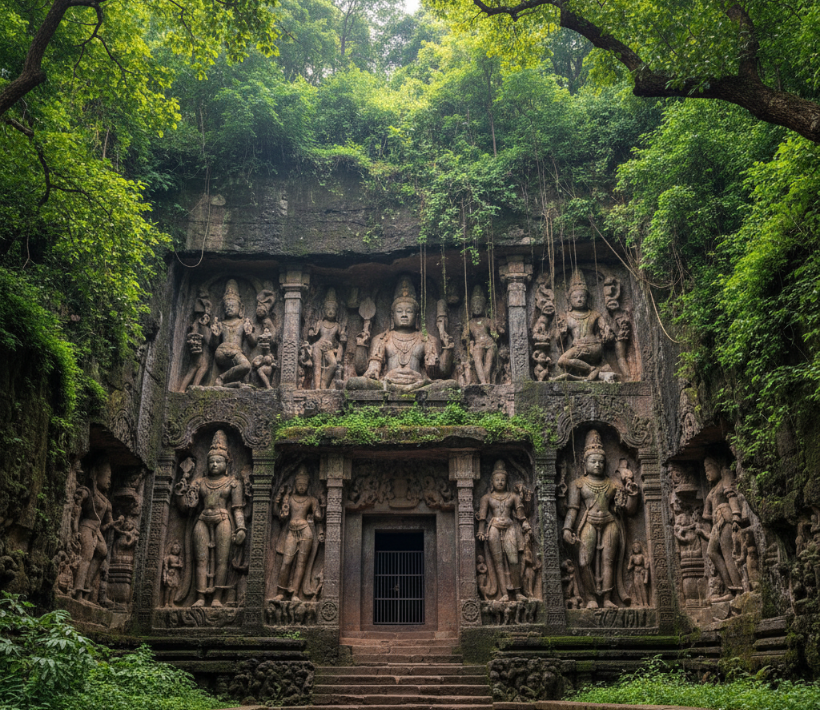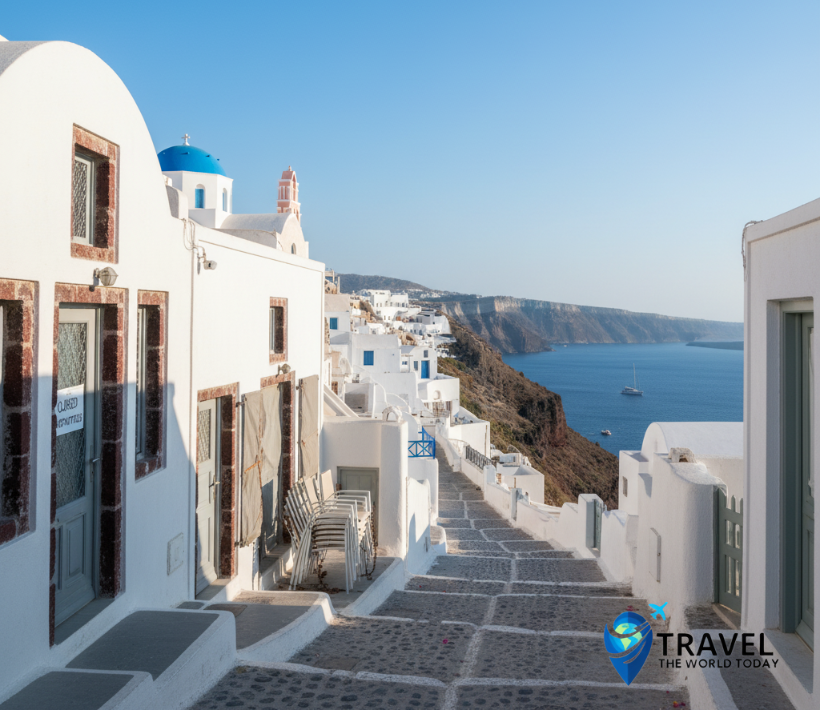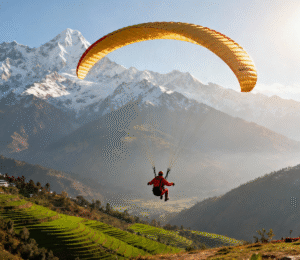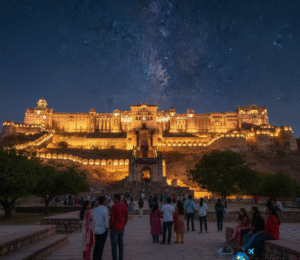Inbound Tourism Collapse? Find Out Why India Must Act Fast to Stay Competitive
By Raghav Ahuja – Travel News Editor, TravelTheWorldToday
Last Updated: July 22, 2025
Estimated Read Time: 9 minutes
Inbound Tourism to India Faces a Crisis Point
Inbound tourism in India has slowed dramatically, raising concerns across the country’s travel and hospitality sectors. According to the Indian Association of Tour Operators (IATO), foreign tourist arrivals (FTAs) have not recovered to pre-pandemic levels. Several key stakeholders are now pressing for structural reforms to ensure India does not lose its edge in the fiercely competitive global tourism market.
To understand how visa changes impact foreign tourist arrivals, read our India Visa Guide 2025.
IATO’s Statement: Reforms Needed to Revive Growth
In a strongly worded statement, IATO President Rajiv Mehra emphasized that inbound tourism remains “far below expectations,” especially when compared with regional peers. He pointed out that India’s lack of action on travel policy, visa processes, and marketing efforts is undermining the country’s vast tourism potential.
“Without urgent reforms, India will continue to miss out on billions in tourism revenue,” Mehra stated.
Why Foreign Tourist Arrivals Are Declining in India
Tourism insiders are sounding alarms over the slow growth of FTAs, especially from Western Europe, North America, and East Asia. As per Ministry of Tourism data:
- India received 6.19 million foreign tourists in 2023, far below the 2019 peak of 10.93 million.
- Thailand (28 million) and UAE (17 million) vastly outpaced India post-COVID.
- India’s share in global tourism receipts dropped below 1.5%, according to UNWTO.
Outdated infrastructure
Complex visa regulations
High GST on hotel tariffs
Inconsistent global marketing
The Role of Infrastructure, Safety & Policy Bottlenecks
Despite landmarks like the Taj Mahal and Kerala’s backwaters, India suffers from:
- Poor last-mile connectivity
- Underdeveloped regional airports
- Unclean and unsafe tourist sites
- Lack of multilingual signage
Limited tourism police and bureaucratic processes further deter global travelers.
| Country | 2023 FTAs (in millions) | e-Visa Available | Avg. Visa Time |
|---|---|---|---|
| India | 6.19 | Limited | 4–7 days |
| Thailand | 28 | Yes | 1–2 days |
| Vietnam | 18 | Yes | Instant |
| UAE | 17 | Yes | 1 day |
How Competing Nations Are Surpassing India in Tourism
While India remains stagnant, countries like Vietnam, Malaysia, and UAE are charging ahead:
- Vietnam offers seamless e-visas to 80+ countries
- Thailand cut visa fees and launched airline deals
- Saudi Arabia’s Vision 2030 includes multi-billion-dollar tourism investment
In contrast, India still grapples with:
- Technical glitches in e-visas
- High visa fees
- Long processing times
For more data, read: G20 Impact on Indian Tourism
What IATO Recommends for Government Action
The IATO roadmap includes:
- Reinstating e-visas for key markets like the UK and Canada
- Rationalizing GST for mid-range & budget travelers
- Modernizing the Incredible India campaign
- Simplifying film shoot approvals
- Expanding participation in international travel expos
Also see: Incredible India Marketing Review
Impact on Hospitality & Aviation Sectors
The inbound slump has hit multiple segments:
- Luxury hotels in Delhi, Agra & Jaipur report 20–30% lower foreign bookings
- Inbound tour operators are downsizing or pivoting to domestic packages
- Airlines are cutting back India-bound routes due to weak demand from Europe/North America
FHRAI has echoed IATO’s call, demanding fast-track reforms.
Visa Policies and e-Visa Restrictions: A Core Problem
India’s visa policies remain one of the biggest deterrents. Key issues:
- No e-visas for UK, Canada, China
- Long approval delays
- Poor user experience on e-visa portals
IATO wants:
- Full e-visa reinstatement
- Competitive visa pricing
- Processing within 48 hours
IATO’s Reforms Roadmap: Key Suggestions
To restore competitiveness, IATO calls for:
- Creation of a dedicated Ministry of Tourism
- Tax holidays for inbound tour operators
- Dual pricing for foreigners (like in UAE)
- Promotion of eco-tourism & heritage stays
- Enhanced MICE infrastructure
These initiatives could attract both high-end and budget-conscious tourists.
Global Tourism Trends vs India’s Position
According to the UNWTO Barometer, global tourism reached 88% of pre-COVID levels in 2023. Highlights:
- Middle East and Asia-Pacific lead recovery
- Countries offer visa-free travel and AI-powered booking platforms
- Carbon-neutral tourism rising in popularity
India still lacks a digitally competitive ecosystem and a sense of strategic urgency.
Expert Opinions from the Indian Travel Industry
“We had over 1,200 UK clients in 2019. This year, just over 300.”
— Sanjay Datta, Tour Operator
“International tourists spend more and stay longer. Without them, our revenues are hit.”
— Ritu Sharma, Hotel Chain Executive
These firsthand industry views reflect a growing crisis on the ground.
What Needs to Be Done to Make India Globally Attractive Again
India has the potential — but the urgency is missing. With the G20 spotlight and global travel booming, India must:
- Enable public-private tourism partnerships
- Embrace digital transformation
- Fix visa systems
- Improve infrastructure and safety
States like Kerala, Rajasthan, and Gujarat provide templates for success through empowered local governance and smart campaigns.
Conclusion: A Wake-Up Call for India’s Tourism Strategy
India stands at a critical inflection point. As global tourism surges forward, inaction could cost billions in revenue and years of positioning. The time to act is now.
By restoring e-visas, upgrading infrastructure, and launching aggressive global campaigns, India can reclaim its rightful spot as a top destination for international tourists.
FAQs on Inbound Tourism to India & IATO Reforms
The Indian Association of Tour Operators (IATO) is a key advocacy body with over 1,600 members, playing a major role in tourism policy reforms and industry regulation.
Factors include e-visa delays, infrastructure gaps, high taxes, safety concerns, and inconsistent global marketing.
Tourists from the UK, Canada, China, and parts of Africa face restricted or delayed e-visa access.
IATO urges tax breaks, e-visa restoration, a stronger marketing campaign, dedicated tourism policing, and enhanced MICE support.
India ranks lower than countries like Thailand and Vietnam in terms of FTAs, ease of travel, infrastructure, and competitiveness.

Hi, I am Raghav Ahuja a curious explorer, travel enthusiast, and the voice behind Travel The World Today. I believe in discovering the beauty of every destination without breaking the bank. Through my journeys, I share tips, stories, and travel guides to help you explore the world on a budget. Whether you’re a solo adventurer, a family traveler, or just planning your next escape, I’m here to inspire and guide you every step of the way.







Post Comment